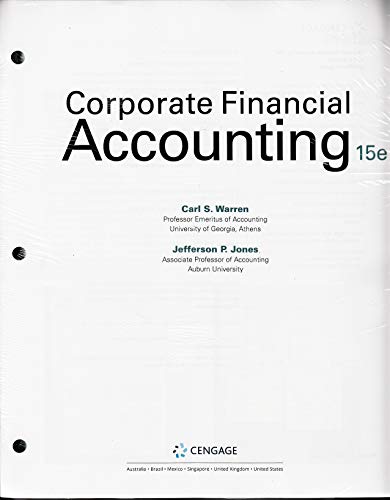Aging of receivables; estimating allowance for doubtful accounts Obj. 4 Trophy Fish Company supplies flies and fishing
Question:
Aging of receivables; estimating allowance for doubtful accounts Obj. 4 Trophy Fish Company supplies flies and fishing gear to sporting goods stores and outfitters throughout the western United States. The accounts receivable clerk for Trophy Fish prepared the following partially completed aging of receivables schedule as of the end of business on December 31, 20Y4:
1 2
3 4
5 30 31 20,000 7,500 4,000 1,300,000 20,000 7,500 120,000 20,000 750,000 4,000 290,000 40,000 1–30 31–60 61–90 Not Due Past Customer Balance 91–120 Days Past Due A B C D E F G H 80,000 120 Over AAA Outfitters Brown Trout Fly Shop Zigs Fish Adventures Subtotals The following accounts were unintentionally omitted from the aging schedule. Assume all due dates are for the current year except for Wolfe Sports, which is due in the next year.
Customer Due Date Balance Adams Sports & Flies May 22 $5,000 Blue Dun Flies Oct. 10 4,900 Cicada Fish Co. Sept. 29 8,400 Deschutes Sports Oct. 20 7,000 Green River Sports Nov. 7 3,500 Smith River Co. Nov. 28 2,400 Western Trout Company Dec. 7 6,800 Wolfe Sports Jan. 20 4,400 Trophy Fish has a past history of uncollectible accounts by age category, as follows:
Age Class Percent Uncollectible Not past due 1%
1–30 days past due 2 31–60 days past due 10 61–90 days past due 30 91–120 days past due 40 Over 120 days past due 80 Instructions 1. Determine the number of days past due for each of the preceding accounts.
2. Complete the aging of receivables schedule by adding the omitted accounts to the bottom of the schedule and updating the totals.
3. Estimate the allowance for doubtful accounts, based on the aging of receivables schedule.
4. Assume that the allowance for doubtful accounts for Trophy Fish Company has a debit balance of $3,600 before adjustment on December 31. Journalize the adjusting entry for uncollectible accounts.
5. Assume that the adjusting entry in (4) was inadvertently omitted, how would the omission affect the balance sheet and income statement?
AppendixLO1
Step by Step Answer:

Corporate Financial Accounting
ISBN: 9781337398176
15th Edition
Authors: Carl Warren, Jefferson Jones





